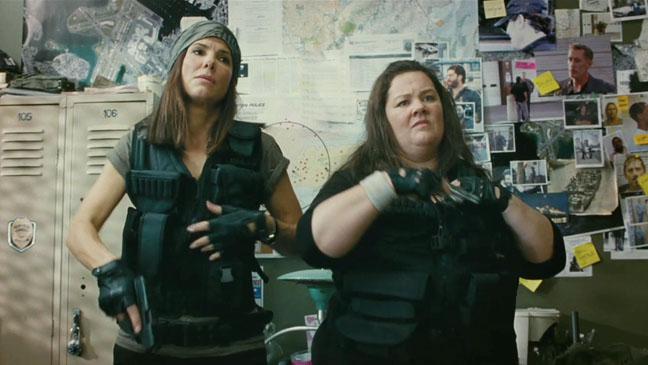In the new buddy-cop comedy hit The Heat, Sandra Bullock and Melissa McCarthy play Ashburn and Mullins, a mismatched duo tasked with taking down a drug lord. At one point, Ashburn, a by-the-books FBI agent, attempts to calmly interrogate a suspect, only to be abrasively interrupted by the loud Bostonian Mullins, who enters the room and immediately throws a phone book in his face. It’s a funny riff on a very familiar routine.
At this point, a police procedural or cops-and-robbers flick feels almost incomplete without a “good cop, bad cop” scene, whether it’s portrayed seriously or for laughs. It’s become so ingrained in popular culture that the technique—in which two interrogators, one rough and aggressive, the other genial and calm, attempt to will a suspect into compliance—long ago became a metaphor applied to a multitude of situations.
But do real-life law enforcers actually employ the tactic?
Not as often as movies and TV shows might make you think. Opinions vary on just how prevalent the tactic is. Joseph Pollini, a retired lieutenant commander, told us that it’s definitely used on occasion. The typical set-up, he said, will have the intimidating “bad” cop first, followed by the more personable “good” cop, who assures the suspect that everything will be “fine.” Maki Haberfeld, a professor of police science at John Jay College of Criminal Justice, says that it’s used “all the time,” mainly by detectives. “When a person is confronted by two individuals, one friendly and one hostile, he or she will ultimately create a much better relationship or zone of comfort with the friendly one,” Haberfeld explains. “Especially if the hostile one is truly threatening.”
But one veteran NYPD officer told us he finds the dichotomy “antiquated,” and suggested it may have been more common when cops faced less scrutiny for brutality against criminals and suspects. Some detainees respond better to anger, he said, while others may respond well to niceness; interrogators in his squad try both approaches, but never in tandem. Joseph Giacalone, a retired NYPD Detective Sergeant, concurred: Pulling the classic version of the routine—in which two people have to essentially put on an act while they take turns interrogating a suspect—can lead to mistakes and mess up the case, he said. “It’s always best to have one person interrogate,” in his view, someone who has built up a rapport with the suspect. (Most experts agree that the most effective approach for interrogating someone is to establish respect and trust.) Giacalone believes that the “good cop, bad cop” routine is more a TV concoction than anything else.
But the earliest pop-culture examples of the routine predate television. In the 1912 D.W. Griffith short The Burglar’s Dilemma, two detectives simultaneously play “hot and cold” with a burglar to comic effect. And the oldest name we could find for the tactic comes not from cop shows or from police manuals, but from a comic strip: Prior to any of the printed usages that we dug up of “good cop, bad cop,” there are multiple references to the “Mutt and Jeff routine,” an allusion to the bumbling main characters of the eponymous comic strip, first published in 1907. (The lanky Mutt is a scheming but foolish horse-race gambler while Jeff is a stodgy insane asylum inmate who also loves the races.) Within a few decades of the strip’s debut, their names were used to describe what we now think of as “good cop, bad cop.” A 1940 book on police interrogation calls it “one of the oldest devices in police work,” in which one officer takes the role of the “kindly, stumbling fellow who is always taking the side of the suspect,” while the other played the “tough, relentless” interrogator.
The earliest printed usage of the phrase “good cop, bad cop” that we found dates to 1956. And the phrase doesn’t become terribly common until the last 30 years or so, when the routine had begun taking over TV and movie screens. On the heels of the rogue cop blockbusters of the 1970s, the ’80s and ’90s gave us a slew of police dramas and procedurals that used the trope again and again. Most notable in this regard, perhaps, is Homicide, on which detectives Frank Pembleton (Andre Braugher) and Tim Bayliss (Kyle Secor) formed a brutally effective duo in “The Box,” the interrogation room that hosted numerous iterations of good cop, bad cop. (The show was loosely adapted from the nonfiction book by David Simon, which describes good cop, bad cop as a bit of police “melodrama” that has “worn thin over the years.”)
Once the tactic became shopworn in Hollywood, portrayals began to shift. Nowadays it is rarely depicted as an effective strategy. Take The Dark Knight, where Heath Ledger’s Joker mocks Batman and Commissioner Gordon’s attempt at the exercise. Even more common these days is good cop, bad cop as farce: Steve Martin electrocuting his nether regions in The Pink Panther, Will Ferrell and Mark Wahlberg bungling an interrogation in The Other Guys, Finn and Jake playfully attempting the routine in Adventure Time. Or, for that matter, the aforementioned scene in The Heat. “I need to go to town on him,” Mullins explains after throwing that phone book. “I’m doing ‘good cop, bad cop’!”
The best of “good cop, bad cop” on screen:
